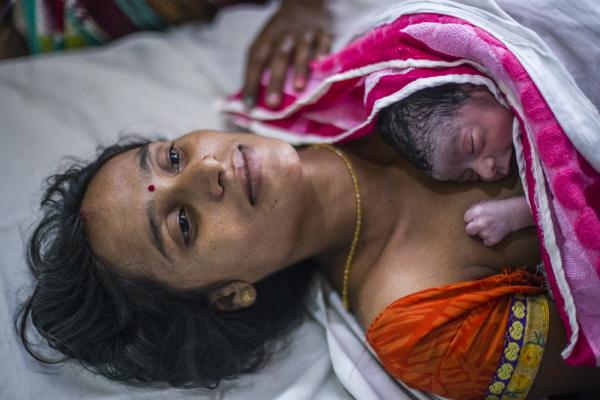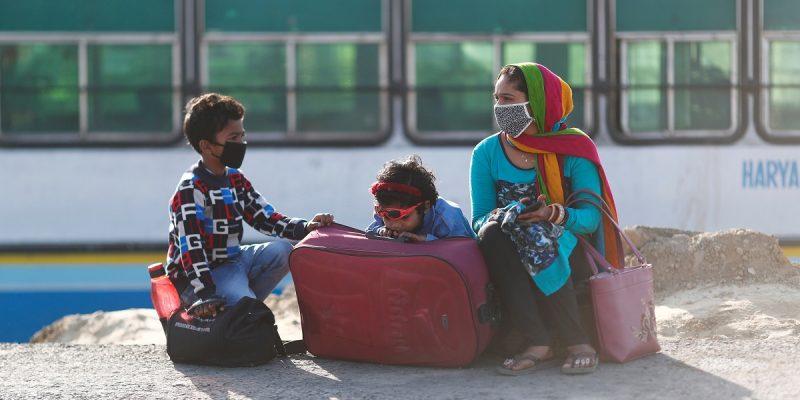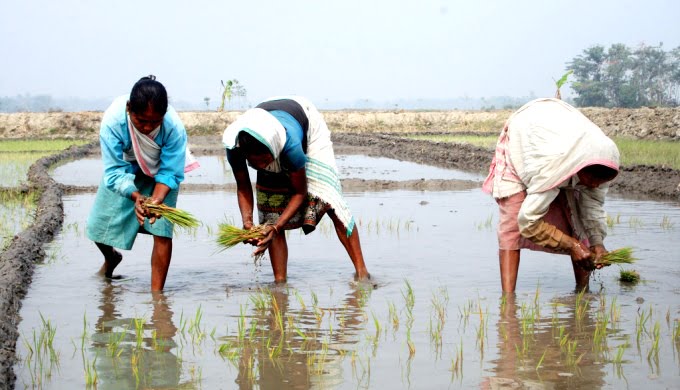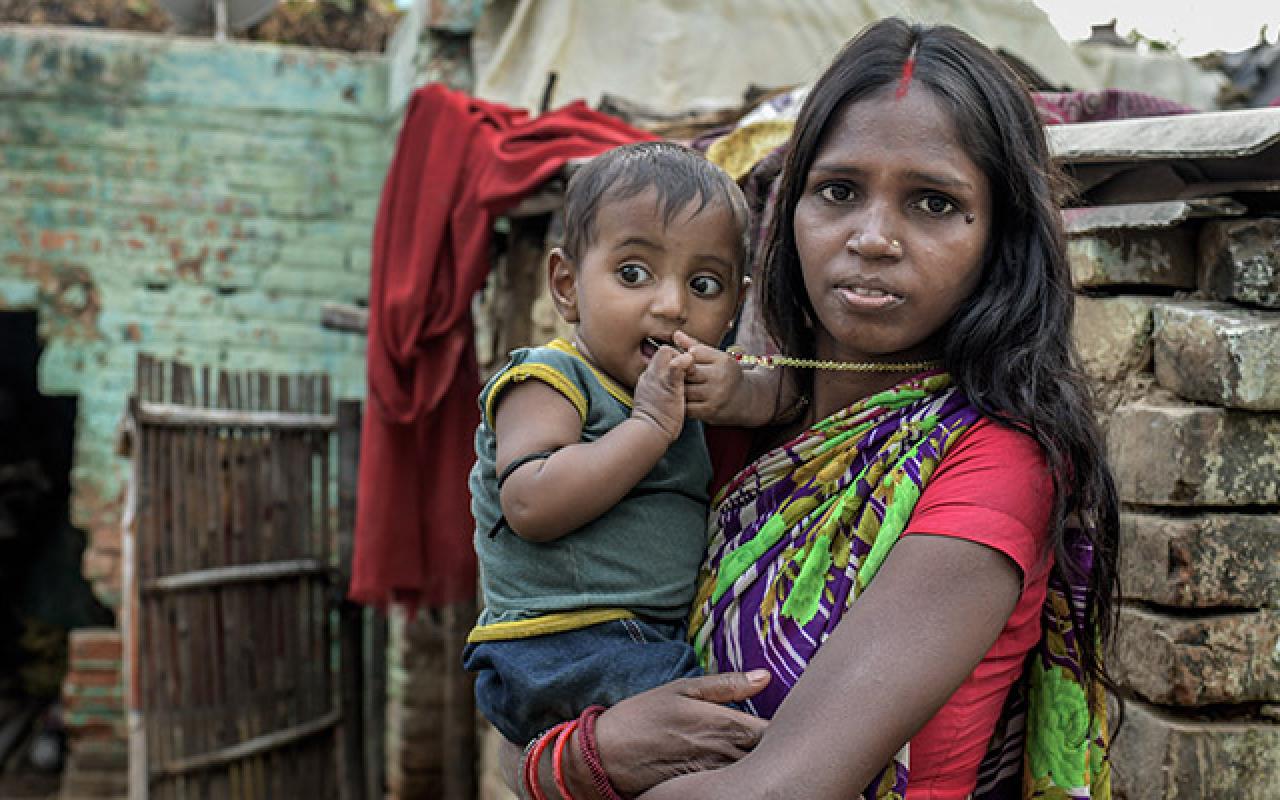The labouring body is a combination of productive and reproductive functions, which act together to keep the market forces running. One cannot separate the surplus labour extracted by the market system, from the labour of parenting, running a home and further providing emotional care. These varying forms of labour are interconnected and enhance each other to keep the neoliberal capitalistic order intact.
Productive, Reproductive and Maternal Body
The ‘productive body’ consists of paid and unpaid labour. Herein, it is to be noted that unpaid labour includes the labour of love. The ‘reproductive body’ comprises ‘the maternal body’, which defines the reproductive roles and functions associated with reproduction—motherhood or parenthood—and once again the labour of love, emotional care, or unpaid labour.

Alison Jaggar, in their work Feminist Politics and Human Nature, speaks about the alienation of any maternal body from ‘sexuality, motherhood and intellect’. Jaggar’s work directs us towards the ways in which capitalism and patriarchy function and work together to regulate, the reproductive body of womxn and in turn to control their productive body as well. (Here, the term “womxn” is used in intersectional feminism to show the word as not being derived from the word “man” and to be inclusive of trans, non-binary and non-white women.)
The ‘productive body’ consists of paid and unpaid labour. Herein, it is to be noted that unpaid labour includes the labour of love. The ‘reproductive body’ comprises ‘the maternal body’, which defines the reproductive roles and functions associated with reproduction—motherhood or parenthood—and once again the labour of love, emotional care, or unpaid labour.
Coming back to the work of Jaggar, in a patriarchal society when limited choices to motherhood and parenthood are available to those who can reproduce, the latter feel alienated from themselves, from the child, and the child inturn doesn’t recognize the parent as a person. Such an alienated parenthood, by a maternal (reproductive) body, is also related to the fact that procreation is seen as an act to produce more bodies of labourers to keep the cogs of many machines running in the world. In this form of alienation surrounding patriarchy and capitalism, unpaid labour of care gets the most marginalised.
Also read: The Matrimony Market And The Eternal Quest For An ‘Ideal’ Bride
In the contemporary Indian society, which is brahminical and patriarchal, the “reproductive body” constituting “the maternal body” is preferred over “the productive body”. This is because a woman’s sexuality and labour is reduced to reproduction and taking care of her family. In Uma Chakravarti’s work on Conceptualising Brahmanical Patriarchy in Early India, the author says that the Hindu texts are said to put forth a set of stridharma. The woman becomes the custodian of her own sexuality. She is said to be disloyal and sexually brazen, hence the Hindu texts say that she must be controlled. A woman, to be ideal on the terms of the brahminical code, needs to wed a heterosexual, cisgender man and bear him a male progeny.

It is to be noted that while the sexuality of the upper caste womxn is protected from “the seed” of the lower caste men; however, the bodies of lower caste women are violated and exploited by both lower and upper caste women. According to Chakravarti, this is the construction of brahminical patriarchy and under this structure the motherhood or parenthood is regarded with supreme value, based on the sanctions provided by the caste structure and Hindu religion, which are further channeled through the health professionals, media personnel and the government campaigns.
For example, in a government ad of the campaign “Beti Bechao Beti Padhao”, the girl child is shown to be educated so that she can go on to become a “good mother” and raise a family. One can understand that the reproductive labour and the productive labour are interconnected; while the maternal body of the womxn is privileged and constructed as an ideal and desired.
The body of the womxn is considered to be fit only for birthing and not for labour outside. She and her labour is seen to be supporting and complimentary to that of men’s’ and their labour. Hence, the women’s labouring body is considered passive, in both reproductive and productive labour.
For example, in the work of Leela Dube on Seed and Earth: The Symbolism of Biological Reproduction and Sexual Relations of Productions, the author says that when we equate woman’s body with “earth” and the man’s semen with “seed”, one can chart out the production relations between the two genders wherein the rights over the crops and land remains with the man, and not the woman. This is similar to how in patriarchal, heteronormative families, the children are said to belong to the man, as they have been born out of the “man’s seed”, while the woman only provided her womb or “earth” for the “man’s seed” to grow.
The productive and reproductive labours of the women intersect here and they are “triple burdened” to provide unpaid labour of love to their family members as well. The current market economy sustains itself because of both visible and invisible labour of womxn, wherein unpaid household and care work is important in producing surplus labour for the continued survival of a neo-liberal capitalistic system.
Selling Labour in the Market Economy
Womxn are considered weaker and unfit for labour outside the home. This is used as a justification to pay the women less than men in agricultural and wage labour. The works of the veteran journalist P Sainath show us that this justification is the devaluing of women’s labour, who spend hours on transplanting the crops, plucking the weeds, etc by bending their backs on the fields and under harsh sunlight for hours. This further causes chronological health issues for the women.
With lands drying up and high male out migration rates, womxn have to take care of their unpaid labour at home and wage labour outside the home, along with walking long distances to fetch water. The productive and reproductive labours of the women intersect here and they are “triple burdened” to provide unpaid labour of love to their family members as well. The current market economy sustains itself because of both visible and invisible labour of womxn, wherein unpaid household and care work is important in producing surplus labour for the continued survival of a neo-liberal capitalistic system.

In this process of triple burden, the health of the maternal body gets affected a lot. In an article titled My uterus keeps coming out, Jyoti Shinoli explains how there are immense cases of “obstructed pregnancies: in Tornamal panchayat of Maharashtra as the Adivasi community members walk up and down the hill numerous times, in order to fetch water. This results in complications in the pregnancy and the birth of children prematurely. Genital prolapse is common in situations such as this for those who can reproduce. Another article called The doctor says my bones have become hollow, the author Medha Kale speaks about how a woman named Bibabai Layare, inspite of having health complications (which also involved a uterus removal), has to continue working in her farm to feed her family.
Also read: Indian Matchmaking: Capitalising On The Arranged Marriage Market & Its Anxieties
The spaces of labour outside the house are patriarchal and hold biases against the maternal body. For example, paid pregnancy leave is only given to women as it is still observed that child rearing is a woman’s role. Male reproductive roles aren’t questioned and the woman has to compromise on her professional life to raise a child. Options such as co-parenting are emerging, but the empirical reality of the market still favours men and their labour, which absolves them of roles and functions related to child rearing. Formal workplaces view womxn and pregnancy as a “disturbance to productivity”.
Women in their paid productive labour get sidelined to compensate for their maternal and reproductive roles and functions. There is an inherent bias against womxn occupying these spaces. While this is the case in formal workplaces, informal workspaces don’t even guarantee womxn paid pregnancy or menstruation leave. These maternal bodies have to labour both inside and outside the household just to survive. Both reproductive functions and labour of love is overlooked and invalidated in the productive labour market, wherein maternal bodies are forced to sell both their productive and reproductive labour for cheap wages.
Aditya Lakshmi likes to write about gender, mental health and climate change. You can find them on Instagram.
Featured Image Source: Oxfam International




